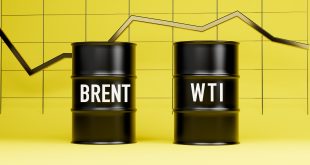The GBP/USD pair surged 0.55% to 1.3454, propelled by a weaker-than-expected US Producer Price Index (PPI) and heightened market uncertainty surrounding President Donald Trump’s reported consideration of firing Federal Reserve Chairman Jerome Powell. The US Dollar Index (DXY), which tracks the dollar’s strength against a basket of major currencies, fell 0.63% to 98.018 on July 16, 2025, reflecting a daily range of 97.714 to 98.912. This decline aligns with a broader trend, with the DXY down 0.20% over the past month, 9.97% over six months, and 5.93% year-over-year, despite a 2.15% gain over five years.
The US PPI slowed to 2.3% year-over-year in June, down from 2.6% and below the forecasted 2.5%, while core PPI dropped from 3% to 2.6%, missing estimates of 2.7%. These figures reignited speculation of a Federal Reserve rate cut in July, though the Fed is expected to maintain its current 4.25%-4.50% range, with a 96.9% probability priced in. The prospect of looser monetary policy weakened the dollar, boosting GBP/USD. Meanwhile, reports of Trump consulting Republican lawmakers in the Oval Office about dismissing Powell amplified market volatility. Sources indicate Trump is seriously contemplating this move, raising concerns about the Federal Reserve’s independence and further pressuring the DXY.
In the UK, inflation surprised markets, with the Consumer Price Index (CPI) rising to 3.6% year-over-year, the highest since January 2024, exceeding expectations of 3.4%. Core CPI climbed to 3.7%, up from 3.5% and above forecasts. This reduced expectations for an imminent Bank of England rate cut, with investors still pricing an 80% chance of a 25-basis-point cut in August, supporting the pound’s strength against the dollar.
Technically, GBP/USD remains bullish, holding above the June 23 low of 1.3369, with momentum fueled by Trump’s remarks, as indicated by the Relative Strength Index (RSI). If the pair stays above 1.3400, it could test the 50-day simple moving average (SMA) at 1.3495, with further resistance at 1.3500 and the 20-day SMA at 1.3581. A drop below 1.3350 might push the pair toward the 100-day SMA at 1.3270. As political and economic uncertainties persist, the GBP/USD pair and the DXY are likely to face continued volatility, with markets closely watching US policy developments and UK inflation trends.

 Noor Trends News, Technical Analysis, Educational Tools and Recommendations
Noor Trends News, Technical Analysis, Educational Tools and Recommendations




